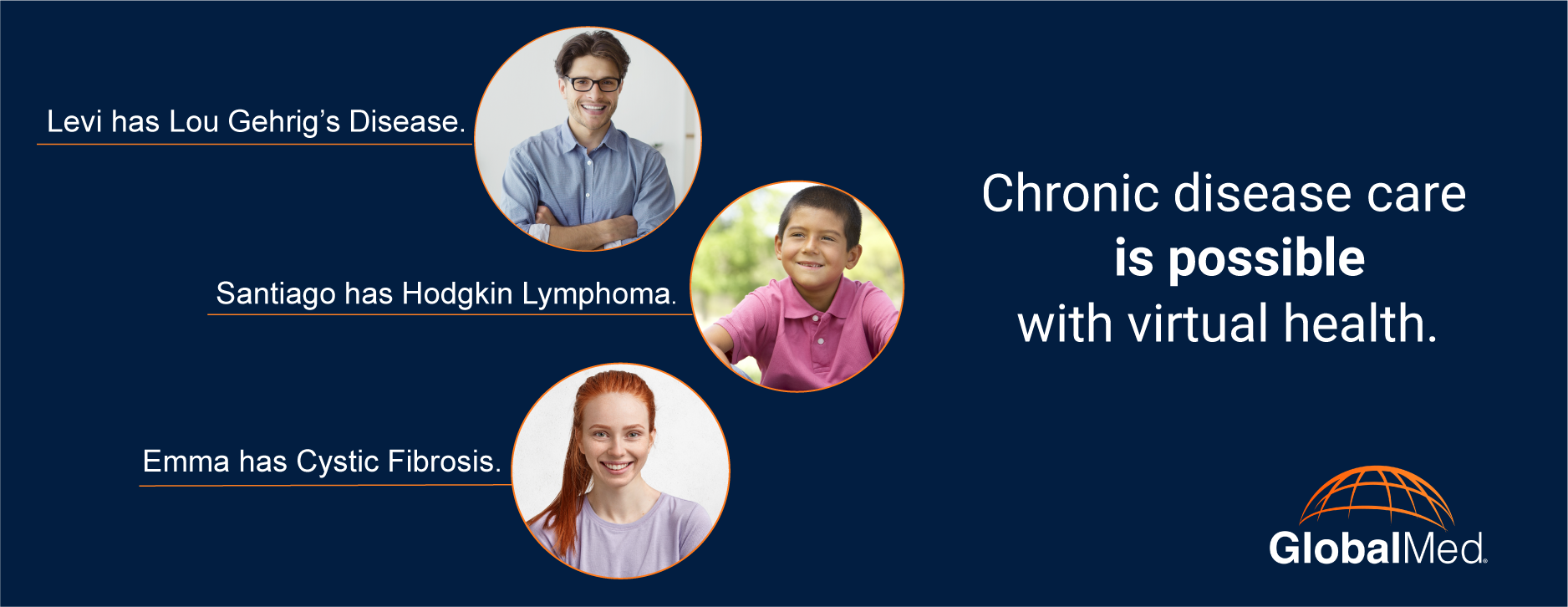
2020 was grim in many ways, but you can’t deny it’s offered a fast-track education in healthcare strategy. Systemic weaknesses have been laid painfully bare, such as provider shortages and the fragility of populations with untreated chronic disease. At the same time, some of the year’s lessons hold game-changing potential. Many providers have recognized their blindness to an opportunity right in front of them – to carry their telemedicine application beyond simple video calls and into the terrain of treating chronic, infectious and acute disease.
And that realization has come in the nick of time. COVID-19 has monopolized the healthcare spotlight, but the patients suffering from cancer, diabetes and heart disease haven’t gone away. Many have been asked to delay biopsies, surgeries, and exams. To provide care safely, forward-thinking providers are using telemedicine to treat them remotely whenever possible and keep them out of hospitals and emergency departments.
But virtual care offers non-pandemic benefits, too. One important advantage: it helps mitigate the looming specialist shortage, such as the deficiency of oncologists predicted by the American Society of Clinical Oncology. It’s a shortage that’s already dire in rural areas – where 19% of the U.S. population live, but only 7% of oncologists practice. For these patients, telemedicine is a lifeline to receiving medical expertise in their community.
Another advantage: radical cost savings for payers, patients, and healthcare systems. Maybe you remember an ominous report from the World Economic Forum and the Harvard School of Public Health which predicted chronic diseases would cost the global economy more than U.S. $30 trillion between 2010 and 2030. Only halfway through that timeframe, a global catastrophe has pushed healthcare costs into the stratosphere. Never have providers been under more pressure to deliver cost-effective care.
Changing Lives with Connected Care
One caveat: only real telemedicine solutions can offer a complete evidence-based experience. Providers who rely on video-only solutions are restricted to basic video calls that can only treat issues like an ear infection or conjunctivitis. Providing responsible clinical care means using solutions that can capture data and integrate into the EHR so providers can see the full story of a patient’s health history. The right solution will also support specific workflows like oncology, behavioral health, cardiology, stroke, and other disciplines.
Equipped with those capabilities, telemedicine can transform a patient’s life. Consider these scenarios:
- Levi is diagnosed with amyotrophic lateral sclerosis (ALS), or Lou Gehrig’s disease, at age 39. The nearest neurologist who specializes in neuromuscular disorders works out of a hospital two hours away. As his illness progresses, traveling to appointments becomes exhausting and stressful for Levi, with his wife missing a day of work to assist each time. Each hospital visit also increases his already high risk of catching an infectious illness. The neurologist implements a telemedicine solution with data-driven devices to monitor Levi’s respiratory function, speech, and mobility at home.
- High school senior Emma has been accepted into a prestigious university. But her parents want her to stay home and attend a local community college because she has cystic fibrosis and the university is in an adjoining state – far from the pulmonologist who’s treated her since she was a toddler. To ensure Emma can attend her first-choice school, he works with the university health center to verify she can conduct virtual appointments with him on campus and receive coordinated monitoring and treatment from her care team.
- Nine-year-old Santiago is fighting Hodgkin lymphoma. Frequent appointments with a pediatric oncologist across the state means that he misses considerable classroom time, while his parents worry their younger sons aren’t getting enough attention. A new school-based health center lets Santiago virtually attend some appointments from school. This keeps him in class and even lets him join in some after-school peer activities, while the entire family can spend more time together.
- Donna, 62, notices a mole on her upper arm is changing in shape and color. After failing to find a dermatologist in her rural Utah county, and learning of the year-long appointment waitlist for a dermatologist two hundred miles away, she decides to ignore it. When a mobile teledermatology clinic comes to her area a few months later, she is able to schedule a screening the next day. The clinician sends high-definition images of the mole to a surgeon at a world-class medical center, who recommends a biopsy. Donna is diagnosed with melanoma and treated before the cancer advances, saving her life.
Transforming Communities, Elevating Outcomes
As well as treating patients on an individual level, some healthcare systems are taking a more panoramic view of care delivery – applying telemedicine in a targeted fashion to assist specific populations. One hospital implemented a virtual care program to address their community’s high rates of peripartum hypertension and infant mortality. By using telehealth to reach young mothers dealing with isolation and other stressors, the hospital has been able to offer tele-lactation help and connect new mothers to pediatric expertise. Similar programs are changing outcomes on a large scale in communities ravaged by opioid addiction, infectious disease outbreaks, or high rates of diabetes.
Ultimately, disease is a marathon, not a sprint. Its repercussions often involve financial losses, burdensome travel, and social deprivation, repercussions that can influence entire populations. Telehealth’s convenience and cost savings can mitigate all of those factors while elevating patient outcomes – not only in a pandemic but in the years to come.



Thank you for sharing about how telemedicine is helpful.